Papers
Page 2

Page 10


Papers
Page 2

Page 10


South Burlington child care center Little Beginnings Early Learning Center had its license degraded by the Vermont Department for Children and Families after it found the center in violation of several areas of state regulations.
Violations cited by the depart-

ment include the program’s director allegedly grabbing at children to move them and slamming a child down on the toilet while they were being toilet trained; staff using obscene language and yelling in front of infants; and a staff member denying a child the rest of their lunch.
A DCF licenser who visited the center on March 12 and 18 reported hearing director Meghan
Kimball and an unnamed staff member telling infants, “This is f---ing stupid;” Drink it or go back to bed;” “I don’t know what you want so you need to figure it out;” and “Stop your f---ing crying,” among other things
On March 25, Kimball sent a letter to families of the center
See DAYCARE on page 16
DARR STAFF WRITER
A new draft report from the Department of Public Safety suggests Vermont needs a massive overhaul in the way it handles emergency dispatch services, but the road to get there could be long and winding.
The report, released last month, was the work of the Public Safety Communications Task Force, established by lawmakers in June 2023 to oversee and establish a reliable, secure and interoperable statewide public safety communications system.
The report found that Vermont, a state of just over 600,000 people, could benefit from reducing the 37 dispatch centers counties down to just six — Hartford, Lamoille County, Shelburne, St. Albans, Westminster and Williston. Those ones already operate as public safety answering points, which handle 911 calls.
In the most aggressive scenario, this could mean the closure of several dispatch centers across the state.
“A consistent message heard across all stakeholder engagement activities was widespread dissatisfaction with numerous components of the existing public safety communications system and a strong desire for improvements,” reads the report.
The report found several inef-
ficiencies with Vermont’s current statewide dispatching system. For example, 33 of the 37 communications centers have operational and staffing deficiencies, falling below the standard of two telecommunicators on duty.
And, according to the report, when multiple public safety answering point’s operate within close proximity, that poses a higher risk of call transfers occurring regularly due to misrouted 911 calls or the need to transfer the call to one or more dispatch centers for the appropriate law enforcement, fire, or emergency medical service response.
The topic of regionalization has arguably been a perennial question in Vermont and a conversation that James Mack, the communications supervisor at the Shelburne Police Department, has been a part of for the last 35 years. He was also a member of the task force that compiled the report, although none of the information was new to him.
Aside from technical inefficiencies, Vermont’s tradition of hyper-local control poses a unique conundrum when it comes to regionalization: who is paying and who is in control?
“The challenge, therefore, is to encourage agencies to set aside political considerations and
See DISPATCH on page 13

LIBERTY DARR STAFF WRITER
A South Burlington firefighter arrested early Saturday morning pleaded not guilty in court Monday to aggravated domestic assault in the first degree and domestic assault charges.
William Harrison, 27, was arrested by South Burlington police Saturday morning after police responded to the report of a domestic disturbance. Initial information indicated that Harrison assaulted a family member by using pepper spray before fleeing the scene. He was held without bail until the arraignment on Monday, cited by police for three counts of first degree aggravated domestic assault, unlawful restraint in the second degree, interference with access to emergency services, simple assault and aggravated disorderly conduct.
According to an affidavit, police arrived at the South Burlington home just after 1 a.m. Saturday where the victim was sobbing, hyperventilating and appeared to have a swollen face. Due to the injuries, South Burlington Fire Department responders began
rendering aid and the victim was transported to the University of Vermont Medical Center to receive treatment.
The victim later told police she had barricaded herself in the bedroom of the home after a verbal altercation in which Harrison became angry. The victim explained that Harrison stuck a lighter under the door to the bedroom threatening to burn the apartment down before spraying pepper spray under the door..
During the course of the investigation, the victim reported Harrison had been physically abusive over the past several years, with multiple violent incidents occurring within the last month.
With the assistance of the Burlington Police Department, Harrison was found in his vehicle parked at TJ Maxx on Shelburne Road. He was not intoxicated at the time of the incident.
Harrison has been employed by the city since October 2023. Upon notice of this incident, city manager Jessie Baker immediately placed Harrison on paid administrative leave pending the investigation.
Harrison was released with conditions after his arraignment Monday.

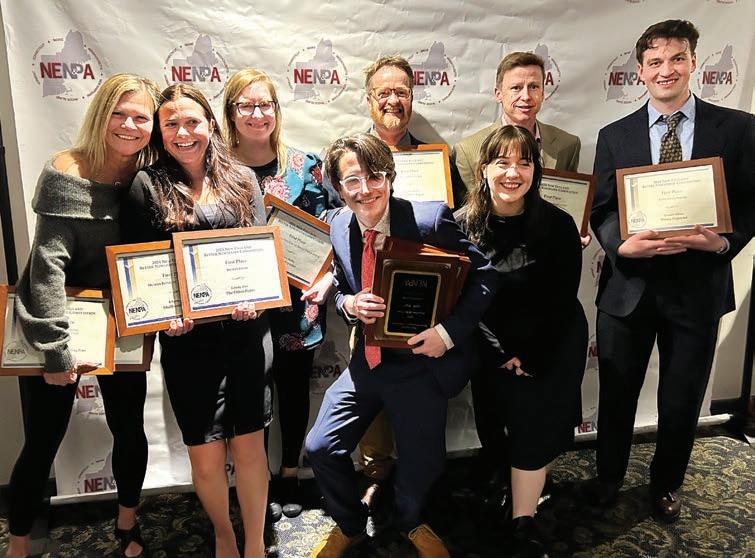
The Vermont Community Newspaper Group took home 35 reporting, design and photographer awards — including 15 firstplace finishes — at the New England Better Newspaper Competition.
The accolades included a nod to staff writer Aaron Calvin, who was named the 2024 New England reporter of the year.
The awards ceremony, put on by the New England Newspaper and Press Association, was held Saturday night in Portland, Maine, and capped off of the 2025 New England Newspaper Convention.
NENPA represents more than 450 news organizations throughout New England and typically receives thousands of entries to its Better Newspaper Competition. The 2024 awards competition included work published from August 2023 through July 2024.
The Vermont Community Newspaper Group publishes five community weeklies — the Stowe Reporter, News & Citizen, The Other Paper of South Burlington, The Shelburne News and The Citizen of Charlotte and Hinesburg. It also publishes the award-winning Stowe Guide & Magazine,
as well as an annual wedding magazine and special themed newspaper supplements.
Reporter of the year Aaron Calvin, 33, started with the company in April 2021, and primarily covers Lamoille County and Stowe for the News & Citizen and Stowe Reporter, while writing features for the Guide. He previously worked as a journalist in Iowa before moving to Vermont four years ago.
The Cambridge resident has made a name for himself juggling beat reporting while nabbing major scoops that have been picked up by statewide news agencies and bringing state and national topics to the local level.
Calvin’s haul this year included four firstplace awards. He won for two Stowe Reporter stories, both in the Business/Economics Reporting categories — “As climate changes: Making snow key to resorts,” Jan. 11, 2024; and “Resorts withdraw connector lift proposal,” Oct. 3, 2023.
And he had two first-place Stowe Guide & Magazine pieces — “Notched,” about

LIBERTY DARR STAFF WRITER
South Burlington high school’s assistant principal, John Craig, was named Vermont’s assistant high principal of the year by the Vermont Principals Association.
Craig has been a familiar face around the district for seven years, the first six years as the school’s assistant principal and this year as acting principal, filling in for Patrick Burke, who is currently on medical leave.
But what exactly is the job of an assistant principal? Putting the extensive work into words isn’t easy and Craig admits even his own mother doesn’t even know exactly what he does most days. That’s partially because no day really looks the same.
“I think it’s such a great job in terms of no day is the same,” Craig said. “And I have so many different areas of the schoolhouse that I work in.”
The list includes student discipline, behavior management, supervision and evaluation of teachers, monitoring systems, schedule building and looking at professional learning for teachers and staff. The list goes on, and completing it is anything but easy.
Add into the mix that, just two
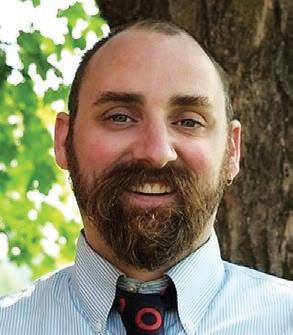
years on the job in South Burlington, a worldwide global pandemic shifted the entire parameters for how schools operated.
“Then there’s also all the work around figuring out how to run a school during COVID and right, specifically our hybrid year,” Craig said. “And so, I’ve really done a little bit everything over the previous six years.”
The Massachusetts native graduated from the University of Vermont, studying education with a concentration in English, before landing a job teaching English at Missisquoi Valley Union High School in Swanton, where he stayed for seven years.
“I taught everything from

grades seven through 12, including AP language and composition to seventh grade poetry, and really everything in between,” he said.
While there, he earned his master’s degree in education leadership at the University of Vermont and took an associate principal job at Hazen Union, where he stayed for four years. Arguably, the work he has done in the classroom has helped him know how best to support teachers in their role as he moved to administration.
This year is his first year helming the high school as long-standing principal Burke takes a medical leave of absence.
“I’ve had the opportunity to kind of step into this role and also mentor two new assistant principals,” he said. “So, we’ve been busy.”
The work of an administrator is long, tedious, and oftentimes thankless. But that doesn’t stop the educators who fill school hallways from waking up every day to educate the next generation.
“The reason I became a teacher is that I really was passionate about working with young people and the opportunity to continue doing that, in all sorts of different ways, is really important to me,” Craig said.


April 12-13, Palm Sunday WeekendSaturday, 4:30 p.m. • Sunday, 9 a.m. and 11 a.m.
April 17, Holy Thursday, 7 p.m.
April 18, Good Friday, 7 p.m.
April 19, Easter Vigil, 8 p.m.
April 20, Easter Sunday, 9 a.m. and 11 a.m. Why not join us?








Total reported incidents: 250
Welfare checks: 10
Trespass: 13
Traffic stops: 14
Threats: 10
Suspicious events: 8
Suicidal person: 4
Stolen vehicle: 5
Sex crimes: 2
Retail theft: 11

Do you have spring planting or digging projects?
South Burlington Police Blotter: March 24-30
Parking problems: 3
Overdoses: 2
Motor vehicle complaints: 8
Larceny: 22
Juvenile problems: 3
If you plan to do any type of digging on your property, you or your contractor must contact Dig Safe™ at 811at least 48 hours prior to digging.
Dig Safe will notify member utilities, who will locate of buried facilities they own and ensure they are clearly marked. If you plan to work within 18 inches of the marked lines, please make sure it is dug by hand.
Smell: Natural gas is normally odorless. VGS adds an odorant similar to the smell of rotten eggs, so it can be easily recognized.
Sight: You may see a white cloud, mist, fog, bubbles in standing water, or blowing dust. You may also see vegetation that appears to be dead or dying.
Sound: It may result in an unusual noise that replicates the sound of roaring, hissing, or whistling.
Move immediately to a safe location. Call VGS at 800639-8081 or call 911 with the exact location. Do not smoke or operate electrical switches or appliances. These items may produce a spark that might result in a dangerous condition. Do not assume someone else will report the condition.
Be safe
Scan the QR Code or visit vgsvt.com/be-safe for more safety information.

Fraud: 4
Foot patrols: 10
DUI: 3
Domestic incidents: 6
Disturbances: 5
Directed patrols: 11
Public assists: 12
Agency assists: 7
Animal problems: 3
Alarms: 16
Crashes: 21
911 hang-ups: 4
Arrests/citations:
Jason M. Cromie, 33, no address listed, for burglary and retail theft on Dorset Street, after a March 4 incident.
March 24 at 11:26 p.m., Joshua T. Jacques, 31, of Fairfax, for unlawful trespass, receiving stolen property and driving without owner consent.
March 27 at 9:34 p.m., Boniface W. Matata, 71, of South Burlington, for driving under the influence on Farrell Street.
March 28 at 9:59 a.m., Gregory A. Haskins, 51, of Waterbury, on an in-state warrant on Shelburne Road.
March 28 at 5:59 p.m., Oscar




Advertising Director Judy Kearns judy@otherpapersbvt.com (802) 734-2928
Advertising Wendy Ewing wendy@shelburnenews.com (802) 238-4980
Editor Tommy Gardner tommy@stowereporter.com (802) 253-2101 x25
Staff Writers Aaron Calvin Liberty Darr Patrick Bilow Briana Brady
Production/Design Stephanie Manning stephanie@shelburnenews.com Kristen Braley kristen@stowereporter.com
Yazzie Jr., 38, of South Burlington, for DUI on Williston Road.
March 28 at 9:01 p.m., Wendy J. Fichtner, 56, of South Burlington, for DUI, at the corner of Hinesburg Road and Kennedy Drive.
March 29 at 1:10 a.m., William Harrison, 27, of South Burlington, for first-degree aggravated domestic assault, second-degree unlawful restraint, simple assault, aggravated disorderly conduct and interfering with access to emergency services, at Olde Orchard Park (see related, page 2).
March 29 at 3:17 p.m., Todd E. Mann, 37, no address listed, for retail theft on Dorset Street. March 29 at 8:30 p.m., Kendrick J. Gray, 26, of Newport, for domestic assault in the presence of a child, on Williston Road.
Note: Charges filed by police are subject to review by the Chittenden County State’s Attorney office and can be amended or dropped.
General Manager Katerina Werth katerina@stowereporter.com
Billing inquiries
Leslie Lafountain leslie@stowereporter.com (802) 253-2101
Advertising submission deadline: Friday at 5 p.m. advertising@otherpapersbvt.com classifieds@otherpapersbvt.com
Editorial submission deadline: Friday at 12 p.m. news@otherpapersbvt.com
Calendar submission deadline: Friday at 12 p.m. news@otherpapersbvt.com
Contact: PO Box 489 Stowe, VT 05672 (802) 253-2101
unnecessary delays.
From the House
Rep. Emilie Krasnow
As spring unfolds, so too do the intricacies of legislative agendas, presenting both challenges and opportunities for progress. We’re now more than halfway through the 2025 legislative session, and education reform remains a top priority, alongside housing, flood and climate resiliency, and concerns about potential federal cuts.

The shortage of affordable homes is not just a challenge for individuals and families; it is a barrier to the growth and prosperity of our state. For businesses, schools and municipalities, the lack of housing makes it increasingly difficult to attract and retain workers. For those in need, the absence of affordable housing contributes to the homelessness crisis and keeps young people and families from settling in Vermont. This shortage impacts every corner of our economy and society.
That is why, after extensive testimony, discussion and collaboration, our committee has passed H.479, an Act Relating to Housing, aimed at addressing these challenges. This omnibus bill passed the House with a tri-partisan vote, reflecting support across party lines. It is a comprehensive response to Vermont’s housing emergency, outlining concrete steps to build more affordable homes, streamline the building process and ensure that all Vermonters — whether renters or homeowners — have access to safe, affordable housing.
One key element of the bill is reforming the appeals process that often delays housing projects. While community input is important, the current system has allowed appeals that halt necessary developments. Our bill ensures that challenges to housing projects can only be made when there is clear evidence of personal harm or when the project violates existing zoning laws. This change will streamline the approval process, ensuring that we can build the homes we need without
Additionally, the bill addresses financing of infrastructure required for housing. From roads to water, sewer and septic systems, essential services must be in place before any new housing project can succeed. By tapping into the Vermont Bond Bank, we ensure that these infrastructure needs are met, providing a foundation for sustainable housing development.
The bill also tackles one of the biggest obstacles to homeownership: affordability. Too many Vermonters are priced out of the housing market. This legislation includes critical funding to support first-time and first-generation homebuyers, providing them the tools and resources they need to achieve the dream of homeownership. It also includes provisions to ensure that new housing developments are accessible to lower- and middle-income families, so more Vermonters can afford to rent or buy their own homes.
Mobile homes are an important part of Vermont’s affordable housing options. This bill includes funding to support mobile home parks and owners while also promoting modular and prefabricated housing solutions that offer cost-effective housing options.
The Vermont Housing and Conservation Board will receive significant funding to reduce the cost of housing for low- and middle-income Vermonters. The Vermont Housing Finance Agency will also be better equipped to help landlords rehabilitate older, dilapidated properties and bring them back into the rental market. These efforts will increase the availability of quality, affordable housing for renters across the state.
Finally, the bill prioritizes the redevelopment of brownfields sites — abandoned or contaminated properties — by streamlining the regulatory process to encourage development in these areas. This initiative will not only provide more housing but also revitalize underutilized properties, turning them into valuable community assets.
April is Fair Housing Month. It’s a time to reflect on the progress we’ve made in ensuring equal access to housing and to reaffirm our commitment to combating housing discrimination in all its forms. In Vermont, Fair Housing Month serves as a reminder of our ongoing efforts to create inclusive
communities where everyone has the opportunity to live in dignity and without fear of discrimination.
I am grateful for the Vermont Human Rights Commission, which plays a crucial role in enforcing fair housing laws and investigating complaints of discrimination. The commission provides education and outreach to landlords, tenants, and housing providers to raise awareness about fair housing rights and responsibilities. Other key groups, such as the Champlain Valley Office of Economic Opportunity and Vermont Legal Aid, offer vital support and legal assistance to individuals facing housing discrimination or eviction.
While homelessness is fundamentally a housing issue, it is equally critical to provide essential wraparound services.
to address homelessness in our state. While homelessness is fundamentally a housing issue, it is equally critical to provide essential wraparound services and adopt a “Housing First” approach. H.91 acknowledges that, to end homelessness, we must provide not only shelter but also the support necessary for individuals to transition to permanent housing and stability.
ability measures and program expectations. Ultimately, H.91 seeks to reduce homelessness by promoting local solutions and integrating existing resources more effectively.
We will vote on this bill in the House this week, and I look forward to seeing the next steps in our efforts to address homelessness in Vermont.
I also want to recognize the work of the House Committee on Human Services in introducing H.91, the Vermont Homeless Emergency Assistance and Responsive Transition to Housing Program. This bill represents a long-term, comprehensive plan
H.91 proposes to replace the current emergency housing programs with VHEARTH, managed by the state’s five Community Action Agencies and the Vermont Network Against Domestic and Sexual Violence. These agencies will collaborate with local partners to provide shelters, supportive services and preventive measures while increasing flexibility to meet community needs.
The bill also includes provisions for a comprehensive implementation plan by 2026, with funding allocations, account-
Lastly, thank you to all the South Burlington community members who join us for our legislative forums every fourth Monday of the month at 6 p.m. at the public library. I also appreciate State Treasurer Mike Pieciak for hosting the Federal Task Force Town Hall here in South Burlington. It was great to be joined by Sen. Peter Welch. It was inspiring seeing so many constituents there, sharing their thoughts and concerns — something I look forward to continuing in more community spaces and town halls. It is an honor to serve as your state representative. Please feel free to reach out anytime with ideas, questions, and concerns: ekrasnow@leg.state.vt.us.
Emilie Krasnow, a Democrat from South Burlington, serves the Chittenden-9 House district.
Enjoy a heartwarming Easter brunch with live music, great food, and cherished moments with family and friends in our beautiful atrium.

SUNDAY, APRIL 20
TWO SEATINGS ( 10:30-11:00 AM & 1:30-2:00 PM )
ADULTS $65 | AGES 5-12 $28 | UNDER 5 FREE
Prices do not include taxes and gratuity.

• Made-To-Order Omelets with Fresh Ingredients
• Carving Stations Featuring Leg of Lamb and Prime Rib
• Build-Your-Own Waffle Bar Served with Pure Vermont Maple Syrup
• Freshly Baked Pastries and Seasonal Desserts
Guest Perspective
Gov. Jim Douglas & Lisa Ventriss
Vermonters don’t always agree with each other on important issues: “Who boasts the best woods skiing?” “Which cheese makers produce the best aged cheddar? “Where to find the best maple creemee?”
There is one trend, however, that has bridged our other cultural differences, and that is the gob smacking cost of health insurance premiums in Vermont. At double the national average, publicly available data show that Vermont is out of line with our peers and our hospitals are spending too much on management and administration. Vermonters find their economic growth stunted, many are under- or uninsured, and business and school budgets must cut personnel and services to absorb double-digit insurance increases.
So, what is driving this unsustainable trend? Almost half of Vermont’s total health care spending (44.5 percent) is hospital costs, so this is where to look for opportunities for reducing costs, increasing efficiencies, and improving quality. Vermont’s 14 hospitals and health systems range from the largest, UVM Medical Center, to the smallest, Grace Cottage. All have financial challenges, but some perform better than others. Because it is the largest, it’s especially important to dig into the data to understand the drivers of UVM’s financial performance.
When benchmarked against Medicare reimbursements, national data show us that three-quarters of the 107 university-based academic medical centers in the U.S. break even or make money when treating Medicare patients. UVM Medical Center, on the other hand, loses $119 million a year treating Medicare patients. The UVM Health Network does not dispute these trends, but it does try to explain them away and claim Vermont’s population is the cause. Vermont’s aging population is still younger than that of Maine, yet the Maine medical system is close to breaking even on Medicare reimbursements. What else might it be?
Another disturbing trend is that within the academic medical
center cohort, UVM reports the 14th highest non-patient labor costs. These include custodial services, information technology, food services, human resources, and of course, administration and management. To its credit, UVM’s labor costs for direct patient care are on par with their peers, just one percent above the average. However, overall, its non-patient labor costs are 31 percent above their peers. And when we parse out administration and management labor costs, the average for 106 other academic medical centers would have to increase by 73 percent to be as high as UVM.
We need to understand what is driving this anomaly compared to other academic medical centers. And it’s not simple because UVM Health Network finances are consolidated with those of UVM Medical Center, making it difficult to understand the true carrying costs of the network.
Plus, there’s the significant question of UVM Health Network costs to support the delivery of care at the three New York hospitals owned by the network.
As consumers of healthcare services and Vermont taxpayers, we are literally paying the costs of an inefficient health network. And we should be concerned that quality is slipping too — last year Medicare downgraded UVM Medical Center to four stars, where it previously had five, the highest rating.
We must ask the obvious question: are Vermonters’ health insurance premiums paying for New Yorkers’ health care? And is UVM Health Network leadership tone deaf when forced to reduce spending by the Green Mountain Care Board? After all, the network first sought to eliminate patient services and then handed out $3 million in yearend bonuses. Such a top-heavy, entrenched organization cannot be sustained by Vermonters or the commercial insurance industry.

Middle class or split down the middle?
To the Editor:
Maybe I sound like a broken record. But I want to talk about South Burlington’s future. Are we a middle-class city? Or are we split down the middle, folks with fixed incomes on one side and parents on the other?
Please consider writing a letter to the editor of The Other Paper, or an email to the School Board, with your vision for the future of South Burlington. These are my personal views. I do not speak for the South Burlington School Board.
Seamus Abshere
The coalition members of VT Healthcare 911 support the Green Mountain Care Board in its mission to drive systemwide improvements in access, affordability and quality to
Teddy Roosevelt once said, “This country will not permanently be a good place for any of us to live in unless we make it a reasonably good place for all of us to live in.”
When the school budget comes up again in the fall, I want us to be ready to negotiate. Not two sides crashing into each other at maximum speed, seeing who ends up winning a 50/50 split.
South Burlington Abshere is a member of the South Burlington School Board.
Help stop country’s slide toward oligarchy
To the Editor:
Whether you tend to vote for Republican, independent or Democratic candidates, if you are concerned about the recent unprec-
edented federal attacks on our democracy, the rule of law, ethics and truth — or about the fallout from those attacks — I encourage you to consider attending one of the April 5 protests to nonviolently make your voice heard and/or your presence seen.
Participating could help stop our country’s slide toward oligarchy or authoritarianism by helping lawmakers and others become courageous enough to take action to preserve and strengthen our democratic structure of resolving disagreements (through compromise) and making decisions. For event locations, visit mobilize.us/handsoff/.
Marcy Murray
South Burlington
John Bossange
Three major Supreme Court decisions have changed the face of our nation. The 2020 Citizens United v. Federal Election Commission, the 2013 Shelby County v. Holder and the 2024 Trump v. United States rulings have created a pathway for a drift into extended tyranny and dictatorship.
These groundbreaking decisions led by Chief Justice John Roberts are now resulting in the unfortunate consequences anticipated by dissenting court justices.
First, Citizens United reversed century-old campaign finance restrictions and enabled corporations and other outside groups to spend unlimited money on elections. This decision has reshaped political campaigns in profound ways by giving corporations and billionaire-funded super PACs a central role in U.S. elections, making untraceable “dark money” a major force in politics. Last year, Elon Musk’s PAC gave the Trump campaign $300 million.
Secondly, the Supreme Court struck down key provisions of the Voting Rights Act of 1965 in the landmark case of Shelby County v. Holder. The Supreme Court’s ruling invalidated, on constitutional grounds, Section 4(b), which provided the formula for determining which jurisdictions were covered under preclearance requirements. Now, photo identification, limited assistance at polling places, reduced options for early voting and even closed voting sites have been instituted in states like Texas and North Carolina.
Thirdly, last year, the Supreme Court ruled that a president could have some immunity from criminal prosecutions for “official acts” in office, no matter their “politics, policy or party.” Judge Roberts continued by stating, “The president may not be prosecuted for exercising his core constitutional powers and he is entitled, at a minimum, to a presumptive immunity from prosecution for all his official acts.”
The question now for all Americans is what can prevent presidents from taking office and remaining there for as long as they wish, given these three decisions? Presidents and their parties can effectively buy their social media platforms and media
outlets for campaigning, take on the core functions of general elections and create a donor base of billionaire-funded super PACs to sustain continual advocacy and promotion of their president or party.
At the same time, they can restrict voter access and allow states to control how, where, and when a person can vote, and if ever challenged for discrimination or constitutional violations, that president or party will be immune from prosecution because their actions are now “official acts” conducted while in office.
The pathway to tyranny and a dictatorship opened by these three misguided Supreme Court decisions has changed the face of America. One party can now remain in power and one dictator can impose their own set of lies, fears, and tyranny and be granted immunity as a unitary executive while in office.
leaders are not compromising, and politicians are operating in their own social media bubbles protecting their reelection chances.
Creating fear and finding victims to blame only lasts so long. Fatigue and reality eventually set in as citizens realize the victims have changed to justify a new set of lies and fears to keep the dictator in power. That’s why dictators come and go, and I trust this will be the case in America, before more damage is done to our nation.
I believe this will not continue. Today’s chaos has polarized America, and the turmoil is exhausting.
Our Founding Fathers understood the weaknesses of a representative government with three equal branches, and they feared a dictator might emerge. American democracy has survived on faith, not just sets of laws, policies, and a Constitution. Trump’s MAGA Party has broken that faith for now, and we have drifted to a place where tyranny reigns with a dictator who lies and who has been harsh, cruel, unreasonable, arbitrary and unfair to tens of millions of American citizens.
I believe this will not continue. Today’s chaos has polarized America, and the turmoil is exhausting. Family members are not talking to family members. Neighbors are avoiding each other. Friendships have become strained and broken, community
DOUGLAS continued from page 6
improve the health of Vermonters. Currently, there is no audit of hospital budgets that would provide insight into the vagaries of financial reporting by hospitals and health systems. Perhaps it’s time such a thing was standardized in Vermont. Perhaps it’s time for reference-based pricing, which would drive hospitals closer to Medicare reimburse-





I expect resistance to grow, and Americans yearning for a more peaceful and unified nation will overwhelm the fear, revenge and hate sewn by Trump’s MAGA party. Americans will also rise above these Supreme Court decisions because they now see how they have created a pathway for tyranny and a dictatorship.
The court must respond to the will of the people and to the ill health of our nation by reversing the Citizens United, Shelby and Trump rulings, which have allowed Trump’s MAGA party to plant this cancer into our nation’s soul and into our presence abroad.
Before that happens, all patriotic, law-abiding citizens must energetically resist tyranny and call out the lies from the dictator Trump. We must rediscover the truth, the good in each other, and restore our faith in our Constitution that has sustained America for 249 years. Our collective resistance will ultimately heal the nation.
John Bossange lives in South Burlington.
ment rates. It is definitely time for Vermonters to raise their voices to call for action in this biennium.
Former Gov. Jim Douglas and Lisa Ventriss, president emerita, Vermont Business Roundtable, are co-chairs of the VT Healthcare 911 Leadership Council.

















• View a complete online copy of the print edition
• Read the latest news
• Find out about sales and events
• Stay up to date on local happenings VTCNG.com/OtherPaperSBVT/digital_edition
Headlines and news sent directly to your inbox every Friday at 10 a.m. Sign in and add your weekly newsletter: VTCNG.com/users/admin/mailinglist Our DIGITAL






























it
The South Burlington High School Unified Program is organizing a student-versus-staff fundraiser basketball game to support Special Olympics Vermont.
The game will be held on April 10 at 7 p.m. on the Sheila Burleigh Court at South Burlington High School, following a Unified game against Burlington High School. In addition to the game, a raffle will be held to raise additional funds for the cause.
The Unified Program at South Burlington High School partners with Special Olympics Vermont to bring together athletes of all physical and intellectual abilities, fostering friendships between students.
The program’s goals focus on refining skills, promoting independence, and emphasizing that success can come from places separate from winning.
The fundraiser will directly benefit Special Olympics Vermont and support the continued success of the Unified Program. The funds raised will make sure the program can continue to support students for years to come, helping to provide opportunities for growth and friendship.
On April 16 from 6:30 to 8 p.m., as part of Fair Housing Month, the South Burlington Housing Committee and South Burlington Public Library will co-host a conversation about the book “On the Housing Crisis” by Jerusalem Demsas. The discussion will be moderated by Jess Hyman of the Champlain Valley Office of Economic Opportunity’s Statewide Housing Advocacy Programs and by the Affordable Housing Committee.
Attendees will learn about and discuss the causes and effects of homelessness and housing instability in South Burlington and Vermont. Several copies of this 160-page anthology are available for circulation at the library.
This short collection of 14 essays published in The Atlantic over the past few years provides a clear framework for the housing crisis in the United States. The topics range from persuasive arguments about our local communities allowing “too much” input to a discussion of NIMBYism and the causes and solutions to homelessness. The impressive first article is on local decision-making for what Demsas believes is a state or national problem.

Local author releases bilingual book of plays
South Burlington native Abby Paige presents ‘Piecework/ Travail à la pièce,” a collection of two plays that explore the Franco-American experience, released by the University of Maine Press

on April 5. Paige will celebrate the book’s launch with a series of events around New England that will feature music, performances, and conversation, including April 17 at the Off Center in Burlington and April 26 at the Haskell Opera House in Derby Line.
“This is a challenging time for folks with cross-border relationships and identities. Since 2009, my work has explored the Franco-American heritage of Vermonters and the long-ignored (but suddenly super-relevant!) history of the borderlands between francophone Canada and northern New England,” Paige said. “French is the second most-spoken language in Vermont after English, and a large proportion of our population traces their roots back to Canada. Those of us who maintain close ties with our families on the other side of the border or who cross the border regularly have felt the increasing fragility of those ties, which are now being tested in a new way. It feels like an important time to celebrate cross-border identities and to re-commit to the family and neighborly bonds between les Québécois and les Vermontois.”
Paige is a writer and theater artist whose work often explores the boundaries between people, languages, nations, and generations. In the tradition of performers such as Lily Tomlin, Sarah Jones, and John Leguizamo, Paige is known for her versatility and her capacity to use laughter to break audiences’ hearts.
More information: abbypaige. com/book-launch.
Violin makers plucked for small business award
The U.S. Small Business Administration’s Vermont district office has named South Burlington business Vermont Violins the Exporter of the Year ss part of its annual small business awards as it prepares for National Small Business Week, which will take place May 4-10.
Owned by Kathy Reilly and Oren Kronick, and located at 5 Green Tree Drive, Vermont Violins was founded in 1994. Originally a locally oriented company, it has grown to incorporate presence in multiple states and today has one of the nation’s most active webstores for violins and their accessories.
In addition to selling and renting instruments, providing repair and appraisal services, and selling accessories, the company is manufacturing its own line of instruments under the V. Richelieu trademark.
Pursuing sustainability, V. Richelieu develops alternatives to endangered species materials in the violin trade and uses Forest Stewardship Council-certified sustainable woods throughout its manufacturing. It has developed its own line of environmentally friendly, ebony-alternative fingerboards, tailpieces, nuts and saddles using a material derived from 100 percent
postconsumer, recycled paper, compressed and bound with a natural resin.
The materials are milled in South Burlington and sold under the brand GaiaTone. GaiaTone is now sold internationally to the violin making community seeking planet-healthy ways to make fine instruments using materials that do not degrade the planet but conjoin with a maker’s desire to make, through music, a healthier planet.
“National Small Business Week honors the risk takers, innovators and job creators that are the backbone of the American economy,” Peter A. Steele, SBA New England regional administrator, said.
Safety Team teaches risk-mitigation techniques
April is Sexual Assault Awareness Month, and The Safety Team, a Vermont-based nonprofit providing violence prevention and trauma recovery programs, will host “Fostering Safety in an Unsafe World,” a free interactive presentation, on Monday, April 14, at 6 p.m. at the Mainstreet Landing Performing Arts Center Film House, 60 Lake St., Burlington.
The event will include a presentation, a video and easy-to-learn strategies and techniques. A live demonstration by The Safety Team — all trained martial artists, many with black belts and beyond — will be followed by a Q&A session. Participants will receive a handout with strategies to prevent violence and bullying.
Registration is encouraged but not required. Register at forms.gle/ hCmhob6CtX7BaiGBA
According to the National Sexual Violence Resource Center, an American is sexually assaulted every 68 seconds. Vermont’s 2021
Youth Risk Behavior Survey found that almost 40 percent of high school female students in the state have experienced unwanted sexual contact — a rate four times higher than that reported by male students.
“Once you are equipped with knowledge, greater awareness of risks and a few simple physical skills, you can practice boundary setting while claiming your voice and healing from trauma,” said Christine DiBlasio, founder of The Safety Team, a psychologist with 30 years of experience and a fifth-degree black belt. “There is nothing more gratifying than witnessing powerful healing and transformation.”
Founded 20 years ago by DiBlasio and a group of advanced female martial artists and professionals, The Safety Team has conducted hundreds of workshops and helped thousands of women and girls. For more information, contact Genie Henry at genie@thesafetyteam.org or 802-985-9551.
South Burlington brothers earn Eagle Scout rank
South Burlington Troop 611, chartered by the South Burlington Rotary, announced that brothers Nicholas and Zachary Bushey, sons of Michael Bushey and Miranda MacDonald Bushey, have earned scouting’s highest honor, the Eagle Scout rank.
On Dec. 19, the brothers completed their boards of review simultaneously at the Green Mountain Council headquarters in Waterbury, marking the culmination of years of dedicated service and personal growth. They officially received the award on March 17 at their Eagle Court of Honor.
Since joining scouting in 2019, the South Burlington High School

students’ journey has been highlighted by challenging high-adventure experiences, including an intensive 17-day expedition to Philmont Scout Ranch in New Mexico with other Scouts from Troop 611. During this trek, they navigated whitewater rapids and scaled Mount Phillips and the Tooth of Time. They both attended summer camp across three states and between the two of them have earned more than 70 merit badges over the past five years.
For his Eagle project, Nicholas led the design, fundraising and construction of a walking path connecting Ascension Lutheran Church and the Ready Crematorium on Allen Road. Through fundraising, including community dinners and local business partner-
ships, he addressed local parking overflow issues.
Zachary’s Eagle project focused on supporting local youth sports by completely renovating the South Burlington Youth Lacrosse trailer. His project included interior redesign, equipment organization and purchasing new gear to make the sport more accessible to local youth.
“These young men represent the very best of Scouting,” troop committee chair Tom O’Keefe said.
There are more than 100 South Burlington Scouts representing the Cub Scout Pack, both the boys’ and girls’ troops (Troop 611 and 6110), and Venturing Crew 1819, are chartered by the South Burlington Rotary. If interested in learning more about Scouting in South Burlington or in the Green Mountain
Council, email troop611vt@gmail. com or visit beascout.scouting.org/.
Joe Cruz, a bicycle traveler, writer, photographer, and chair of the philosophy department at Williams College, will be at the Champlain College Alumni Auditorium, 375 Maple St., Burlington, on April 18 at 7:30 p.m. for an evening of tales from his past journeys. Come to be inspired, experience adventure, and dream about big bike rides.
The event is free to attend but you are asked to RSVP to reserve a seat. A virtual option is available


Kenrick Vezina
You’re probably familiar with the basic amphibian life plan: start as a wriggly water-breathing tadpole, then transform into an adult that breathes air.
This is the pattern followed by all our frogs and toads, and our mole salamanders as well. Enter the eastern newt, an amphibian with three different forms, whose ability to transform its body and its lifestyle makes its peers look like amateurs.
All eastern newts begin life as jelly-coated eggs scattered in stagnant or sluggish bodies of water. Larval newts emerge in spring as tiny, drab olive tadpoles with feathery external gills and an appetite for even tinier invertebrates.
Over the course of about three months, they first grow forelimbs then hindlimbs, trade their gills for lungs and develop pebbly skin that’s good at retaining moisture. They also turn a vivid orangered, with a line of black-ringed dots down their back. This is the red eft stage, which is so distinct from their larval and adult forms that they were once thought to be a different species.
In the fall, they move onto land and begin an amphibian version of the Amish rumspringa that may
last anywhere from three to seven years.
They can tolerate dry conditions briefly, but they are by far most active at night and during cool or wet conditions. If you get caught in the woods during a sudden summer cloudburst, you might see dozens of efts emerge from the leaf litter as the threat of dehydration is momentarily deferred. Their traffic-cone coloring makes them easy to spot, but it’s also a warning: they secrete a potent, foul-tasting toxin from their skin.
Eventually, urged by factors we still don’t understand, the efts migrate back to their breeding sites and begin another metamorphosis. Back in the water, their tails broaden vertically into paddles, their skin becomes slick and permeable like a frog’s — to better absorb oxygen from water — and their color fades back to olive with a yellowish belly and a lingering line of red warning spots down their back. They also become sexually mature, and in late winter or early spring, sometimes even under a thin layer of ice, they’ll mate and lay eggs.
Eastern newts are found across the entire eastern half of the United States and well into Canada, with five regional subspecies. In the Northeast, we have the “red-spotted” subspecies. Their huge range speaks to their ability to exploit many habitats, with the only strict

requirement being water in which to breed. This flexibility is possible because of their ability to adapt their life cycles to their environment.
The three forms mentioned earlier is an understatement. After the aquatic larval stage, all bets are off. If aquatic habitat is plentiful and reliable, as it usually is for the “peninsula newt” subspecies of the Florida panhandle, tadpoles may skip the eft stage entirely and quickly develop into sexually mature adults.
On the other hand, if access to water is very unreliable, they may take on an eft-like adult form and only return to water temporarily to breed. The degree of variability in each population, is, itself variable: populations that have evolved in stable habitats seem to have stable life cycles, whereas populations in
areas of frequent drought or other disturbance may change their life cycles dramatically.
Virtually all our “red-spotted” newts go through an eft stage, but members of the same subspecies on the Atlantic Coastal Plain may not, seemingly in response to factors like local flooding or droughts. Even the way different populations circumvent the eft stage varies: some metamorphose into “true” adults with lungs, some may keep their external gills.
Eastern newts can also adjust their development in response to the presence of predators. One experiment found that eggs raised in the same body of water as dragonfly nymphs hatched into larvae with statistically larger tails, presumably to power a swift escape. They are incredible models of polyphenism: the ability to produce several

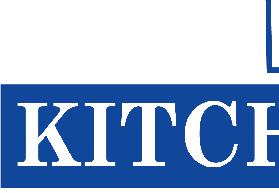



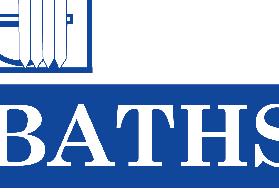


distinct forms from a single genetic blueprint. And even if they get injured, they have some of the best regenerative abilities of any vertebrates, able regrow severed limbs and even damaged organs. There is still much to be discovered about the exact mechanisms underlying their incredible physical malleability. But one thing is sure: no animal you encounter in the woods lives as many different lives as the eastern newt.
Kenrick Vezina is a freelance writer, naturalist, and raconteur based in the Greater Boston area. Illustration by Adelaide Murphy Tyrol. The Outside Story is assigned and edited by Northern Woodlands magazine and sponsored by the Wellborn Ecology Fund of New Hampshire Charitable Foundation: nhcf.org.










the history of the Smugglers’ Notch section of Route 108 in the History Reporting category; and “It’s Miller Time,” about the late photographer Peter Miller, in the Obituaries category.
Reporter Liberty Darr nabbed two firstplace awards, one in the Sports Story category for The Other Paper (“Tell-tale heart: Pickleball racket in South Burlington prompts resident petition,” June 27, 2024); and one in the Human Interest Feature Story category for the Shelburne News (“Other side of the tracks: Mailles run last family-owned dairy in Shelburne,” Feb. 22, 2024).
Tommy Gardner won a first-place Human Interest Feature Story award for his News & Citizen story about last year’s total solar eclipse (“Solar eclipse wows northern Vermont,” April 11, 2024).
Rounding out the first-place newsroom award-winners was photographer Gordon Miller, who won for his Stowe Reporter photograph of first responders rescuing a man from rising flood waters, in the Spot News Photo category.
The company also won big in the design and production categories.
Kristen Braley had three first place finishes for ad design: “Most Creative Use of Small Print Space” for Hannon Home Center and “Real Estate Display Ad” for Red Barn Realty, both for the Stowe Reporter; and “Best Health Ad” for Dorset Street Dermatology, for The Other Paper.
Katerina Werth had the top “Local Display Ad, Color,” for her work in the Stowe Reporter on advertisement about Stowe’s short-term rental ordinance, a hot-button issue for much of the past year and a half.
Werth shared a first-place nod with Greg Popa in the “Pure Advertising Niche Publication” category for the Stowe/Green Mountain Weddings magazine.
And the design team collective took home a first-place prize in the Contests category, for its work in the “4393 Readers’ Choice Awards.”
Group also took home a passel of second-
and third-place newsroom and production awards.
That includes a second-place Best Niche Publication finish for Greg Popa and the Stowe Guide, perennial award winners in that category. And it includes a third place for the Stowe Reporter team in the Advertising General Excellence category:
On the reporting side:
• News Feature Photo, second place: Miller, for Morrisville’s Memorial Day parade in the News & Citizen
• Arts & Entertainment Reporting, second place: Avalon Styles-Ashley, for “Sculpted,” in the Stowe Guide
• Human Interest Feature Story, second place: Gardner, for “Stowe teens train as fire fighters” (Stowe Reporter, Dec. 7, 2023)
• General News Story, third place: Calvin, for “Awe, romance and traffic mark Stowe eclipse” (Stowe Reporter, April 11, 2024)
• Local Personality Profile, second place: Gardner, for “Surf’s Up,” in the Stowe Guide
• Climate Change or Weather Reporting, second place: Calvin and Gardner, for “Widespread flooding déjà vu for Lamoille County” (News & Citizen, Dec. 21, 2023)
• Local Personality profile, third place: Darr, for “Chittenden County forester taps into new path” (The Other Paper, May 16, 2024)
• Obituaries, third place: Gardner, for “Friends, colleagues remember smilin’ Brian Kellogg” (News & Citizen, Oct. 12, 2023)
• Obituaries, third place: Gardner, for “JB McKinley finishes his last Page,” Stowe Guide
• Sports Story, third place: Styles-Ashley, for “SprigSlog,” Stowe Guide.
For production and design:
• Local Display Ad, black and white, second place: Werth, for Stowe Family Dentistry, Stowe Reporter
• Local Display Ad, black and white, second place: Braley, for Stowe Family Dentistry, News & Citizen

• Best Holiday Ad, second place: Braley, for Denton Auto, News & Citizen
• Overall Design and Presentation of a Special Section, third place: Stowe Reporter team, for RIDE 2024
• Local Display Ad, color, third place: Werth, for “Coming Together,”
News & Citizen
• Local Display Ad, color, third place: Braley, for Stowe Communication, Stowe Reporter
• Illustration/Infographics, third place: Werth, for the RIDE supplement’s map of trails and advertisers
• Real Estate Display Ad, second place: Braley, for Gerry R. Real Estate, The Other


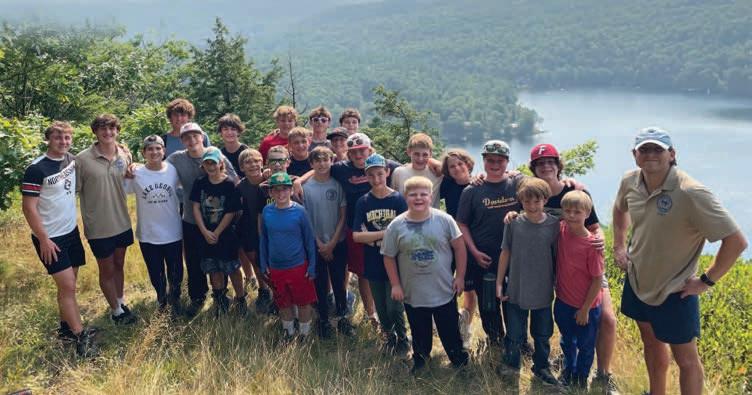


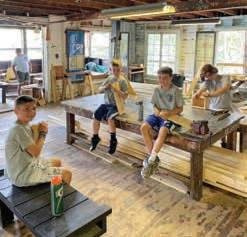









LAUREN READ CORRESPONDENT
When Catherine Gilwee stepped on the court in the first round of the women’s NCAA Tournament on March 22, the green and gold she was wearing didn’t just represent her school — it also represented her home state.
“I just love that I’m from Vermont and I love that I get to stay close to home and play for a school that I love in a state that I love,” Shelburne native Gilwee said. “It meant so much to me to be able to do that on the big stage and do it with my amazing teammates.”
Gilwee scored 13 points for the No. 15-seeded University of Vermont in a 75-55 loss to No. 2 North Carolina State, a defeat that in many ways still felt like a win for the program.
While the tournament’s other No. 15 seeds were losing by nearly 70 points, the Catamounts hung with Wolfpack — trailing by just 2 points at halftime.
Eventually, the tournament’s seeding was proven true as UVM ran out of gas and N.C. State’s talented roster pulled away. But the three quarters of tight basketball has reentered the Catamounts into the national conversation and Gilwee was front-and-center in that effort.
“I was just really proud that
we came out with that chip on our shoulder and not just backing down to them because they were N.C. State and we’re Vermont,” Gilwee said. “I was super proud of our performance. We stuck with them for the first three quarters, and no one expected us to do that.”
Gilwee played at Champlain Valley Union High School for four seasons, helping lead the Redhawks to a 30-0 record in her final two seasons. She was named the Gatorade high school girls basketball player of the year in 2021 and the Burlington’s Free Press’ Miss Basketball.
Gilwee had no expectations entering UVM and the women’s basketball program. But the 5’8” guard played in all the Catamounts’ games in her freshman and sophomore years, averaging 10 points her second season and earning a spot in the NCAA tournament.
“If you were to ask me when I was coming into UVM what I saw my four years looking like, I definitely didn’t think my freshman year would’ve gone as well as it did,” Gilwee said. “All the years since then, I think it’s been even better than I could have imagined.”
The team’s 2023 tournament performance helped them coming into this year, Gilwee said. The Catamounts were able to take
Join our small, welcoming parish in a flexible role supporting church operations. Key responsibilities include: preparing weekly service bulletins, managing communications (phone, email, newsletter), and general administrative tasks. Proficiency in MS Office, willingness to learn new applications. Familiarity with the Episcopal Church calendar and liturgy is a plus.
• Start Date: April 25, 2025
• Schedule: Negotiable hours
• Compensation: Hourly, based on experience (employer pays half of FICA)
• Benefits: Minimum two weeks’ vacation
Send a cover letter and resume to allsaintsvestry16@gmail.com with “Office Administrator Position” in the subject line.

All Saints Episcopal Church 1250 Spear Street (Corner of Swift & Spear) South Burlington, Vermont 802.862.9750 • allsaintsvt05403.org
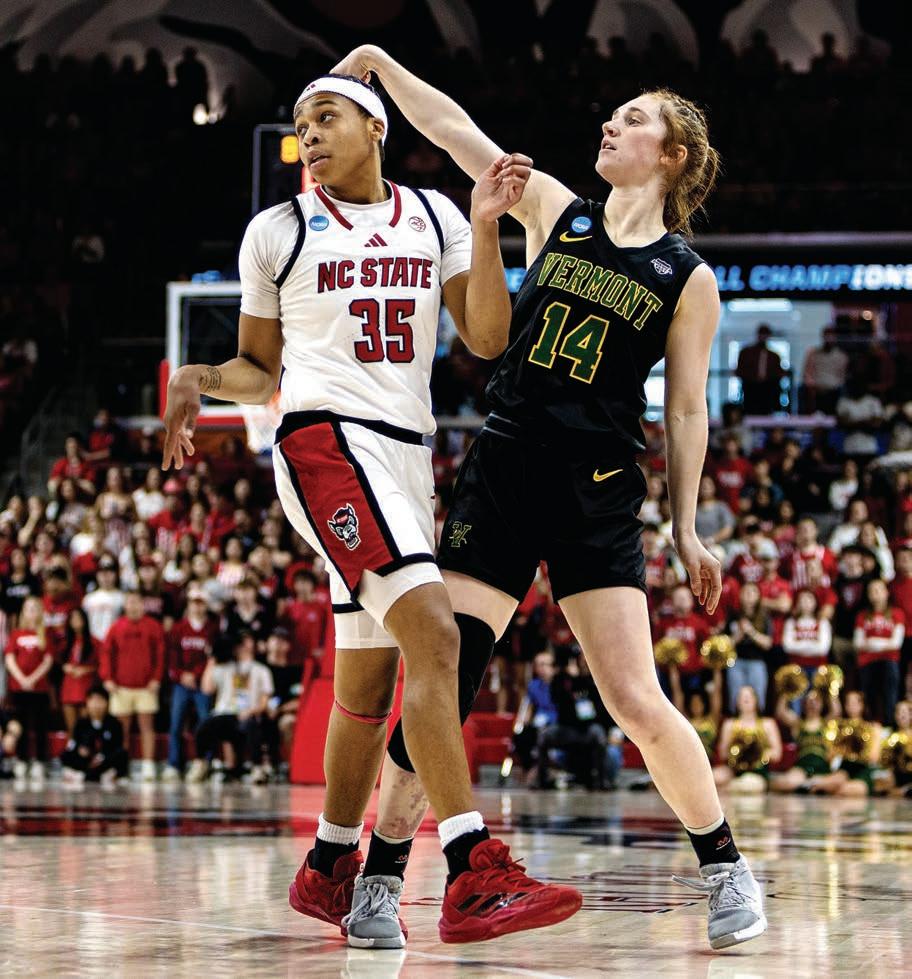
away lessons from the loss to Connecticut two years ago that they took into their matchup against the Wolfpack.
“We came out with a little bit more confidence this year,” she said. “It wasn’t as much of a shock walking into this game as it was
two years ago when we played UConn.”
After missing her junior year to injury, Gilwee came back strong this season and helped lead the Catamounts to a resurgent season.
The program posted a 21-13 record, won the America East title and garnered national notice for their tournament performance last weekend.

All of that felt like a step forward for a program on the rise.
“What was exciting was I know that we didn’t play our best game,” Gilwee said of the team’s loss to NC State. “It’s not like we played a perfect game, and we lost. We didn’t even play a perfect game and, if we had, we could have won that game. It’s super helpful for the future and just continuing to grow and learn how to be locked in and just limiting our mistakes.
“I think as long as everyone has the same mindset and is on the same page, we could accomplish a lot in the future.”
Through it all, Gilwee has had local fans cheering her on, from the Redhawks fans who watched her develop as a CVU player on the court to the local kids who she gets to mentor in the same way former UVM players did for her.
“It was just awesome to see how much support we have and just how many people really care about the UVM program,” Gilwee said. “I just love how it’s such a tight-knit community and I love how everyone supports everyone and all those people reaching out means so much to me.”
focus on the potential benefits,” reads the report. “By shifting the focus to the collective gains, agencies can work together to achieve regionalization that enhances the effectiveness and efficiency of emergency communications services delivered across the state.”
Shelburne’s dispatch center is unique and already operates on a slightly regionalized scale, serving 32 different communities with nine full-time dispatchers. But the growth has come about organically, Mack said, arguing that regionalization in that way can oftentimes create better outcomes.
“Consolidation is good when it works for both sides,” Mack said. “A neighboring town says, ‘Oh, we need dispatching services.’ Well, here’s what we will do for you and here’s what it will cost for you. They come in willingly and we’ve had far fewer problems that way. When you force an agency in here, there’s a lot of problems.”
Past regionalization efforts in Chittenden County have fizzled. For example, the Chittenden County Public Safety Authority in 2018 began moving toward its own regional dispatching model in seven communities — Burlington, Colchester, Milton, South Burlington, Williston and Winooski — but by 2023, the effort appeared to have stalled after Colchester pulled out of the deal and failed to authorize the annual funding for the municipal entity that year. Milton also started contracting with St. Albans to provide those services.
Even further back — roughly 30 years ago — the Vision 2000 committee funded through a grant procured by former Senator Patrick Leahy was similarly studying public safety consolidation.
continued from page 9
for those wishing to attend from out of town, state, or country.
Cruz took his first bikepacking trip in 1988 and has since cycled the world, aiming to meet people, find stories, and experience cultures and history. He and his wife split their time between southern Vermont and New York City.
To register or receive the virtual meeting link, visit tinyurl.com/2mv2svwkVenue.
Be part of Ariel’s, Flounder’s world
The Lyric Theatre Company presents Disney’s “The Little Mermaid” at the Burlington’s Flynn Theater.
Performances run April 10-13, with matinees on Saturday and Sunday at 1 p.m., evening performances Thursday through Saturday at 7:30 p.m., and a final performance Sunday at 6 p.m. Saturday’s evening performance will feature American Sign Language translation for the hearing impaired, and the Sunday matinee will be audio-described for patrons who are blind or visually impaired.
Tickets range from $20–$55, with student and senior rates available.
Steve Locke, South Burlington’s deputy city manager, fire chief and board chair of the public safety authority, said the recent pause reflected the tug-of war between two problems: maintaining their own municipal dispatch centers while simultaneously attempting to generate the capital costs for a regional center.
“You’re having to build a new center with new resources at the same time that you’re keeping existing operations going,” Locke said. “And most of the centers are struggling to provide two dispatchers on 24/7 or the staffing levels that you would desire.”
Not to mention the COVID-19 pandemic that stopped just about everyone in their tracks. New efforts and projects took a backseat as municipalities grappled with leaner budgets, displaced funding models and problems never before seen.
Shelburne, unlike some of its neighbors, voted against joining the authority because the town was essentially “already doing it,” Mack said. Ultimately, he said, it would not have been a massive cost-saving effort for the town.
South Burlington, on the other hand, bolstered its own dispatch center in 2024 with American Rescue Plan Act funds, surplus dollars and grant-funded equipment originally intended for the regional project, to invest in the new technology and a seventh dispatch employee in-house.
Mack doesn’t anticipate any substantial movement due to the draft report right away, since a slew of questions remain, like how a regionalized effort could be funded with help from state dollars or if those six centers in the report even want to
take on more territory. He does foresee this potentially getting the Chittenden County Regional Authority to pick up the pace again.
“What’s in the report, I think, is a starting point for us to have discussions, not an end point,” he said.
Locke said South Burlington remains open to regionalization efforts, especial-
ly since the authority wasn’t officially disbanded and is likely to meet in the coming months to discuss the report.
“If there comes something out of this report that indicates there’s still a willingness to move in that direction, then that authority still is in play and could be the governing body for a regional center,” Locke said.

Celebrate Tartan Day at the Richmond Free Library’s 2025 Highland Dance Showcase. Dancers from Green Mountain Performing Arts and Highland Dance VT will perform a set of traditional Scottish Highland dances and a selection of contemporary Highland choreographies at the library, located at, 201 Bridge St., Richmond, on April 5 at 4 p.m.
CVU hosts climate action plan talk
Don’t miss your chance to weigh in on the 2025 update to Vermont’s Climate Action Plan at Champlain Valley Union High School on April 15 at 6 p.m.
Climate council members will listen and consider public input when revising the plan, which is due July 1. Background materials will be emailed a few days before the meeting. Refreshments provided.
Register at climatechange.vermont.gov/ climate-action-plan-2025-update.
Based on one of Hans Christian Andersen’s most beloved stories and the classic animated film, with music by eight-time Academy Award winner Alan Menken, lyrics by Howard Ashman and Glenn Slater, and a compelling book by Doug Wright, this fishy fable will capture your heart with its irresistible songs, including “Under the Sea,” “Kiss the Girl,” and “Part of Your World.”




and delivery of General Fund capital improvement projects
Bachelor’s degree in civil engineering or construction management preferred with a minimum of 5 years of progressive responsibilities, including at least 3 years as a Project Manager associated with Public Works projects, or an equivalent combination of education and relevant experience. Working knowledge of Vermont regulatory/permitting requirements and stormwater rules would be a plus. The ideal candidate will be personable, have excellent verbal and written communication skills with attention to detail and follow-through. Must possess a valid Vermont driver’s license.








week-long bait drop is a cooperative effort between Vermont and the U.S. Department of Agriculture Wildlife Services to stop the spread of the potentially fatal disease.
Rabies is a deadly viral disease of the brain that infects mammals. It is most often seen in raccoons, skunks, foxes, and bats, but unvaccinated pets and livestock can also get rabies.The virus is spread through the bite of an infected animal or contact with its








The week-long bait drop is a cooperative effort between Vermont and the U.S. Department of Agriculture Wildlife Services to stop the spread of the potentially fatal disease. Rabies is a deadly viral disease of the brain that infects mammals. It is most often seen in raccoons, skunks, foxes, and bats, but unvaccinated pets and livestock can also get rabies.The virus is spread through the bite of an infected animal or contact with its




saliva. If left untreated, rabies is almost always fatal in humans and animals. However, treatment with the rabies vaccine is nearly 100 percent effective when given soon after a person is bitten by a rabid animal. So far this year, 23 animals in Vermont have tested positive for rabies, and 14 of those have been raccoons.
According to wildlife officials, rabid animals often show a change in their normal behavior, but you cannot tell whether an animal has rabies simply by looking at it. People should not touch or pick up wild animals or strays – even baby animals.









Ring Sizing • Cleaning • Stone Tightening • Rhodium Plating
Performed by



On Saturday March 29th, several Orchard School students participated in the
in grades K-12 competed in five rounds of chess at Lamoille Union High School throughout the day.
students from Orchard elementary won first place in the elementary school team competition. From
Cadive and Wesley Benham, grade 4; Adheesh Rout, Shriyan Vinjumuri and Theodore McRaith,
continued from page 1
notifying them of the recent violations, telling parents she was unaware of the severity of the accusations before meeting with the state licenser that day.
She explained that she was outside of the room when the licenser observed the staff member swearing at the child and said she was listed in the violations due to her being in the building and “based on the business structure” of the center.
“I am also speaking with every staff member to make sure I have the knowledge of every incident if there were more involving any staff member in this building,” she wrote, noting the employee listed in the violations had been asked not to return to work until a solution could be found to ensure the behavior never happens again. “This employee may be terminated permanently,” she wrote.
A day later, Kimball notified families that the center would be closed for the remainder of last week due to “an unforeseen staffing shortage and circumstances out of her control.”
According to Janet McLaughlin, deputy commissioner of the Child Development Division, the state placed the program’s childcare license into “provisional” status on March 25 with numerous safeguards and requirements, including limitations on staff that can work with children and disal-
lowing enrollment of new children.
“For the staff members listed in the violations, one is not allowed to work with children without further training and the other may not work unsupervised without further training,” she wrote in a statement.
The DCF report includes corrective actions steps like creating program improvement plans that must include how staff will be trained and supervised.
According to one staff member who had been reporting incidents to the state, the violations came as a relief. The University of Vermont student and former staffer — who spoke on condition of anonymity — said she began reporting red flags after being with the center on and off for roughly three years. She resigned from her full-time position last week.
“Obviously, you form relationships with these children, and I wanted to stay and see them every day,” she said. “I also felt it was important for them to have a friendly and familiar face to see every day. And then when I started hearing things from the infant classroom is when I was like, ‘I really got to be there for these kids. I don’t know what’s going on, but I’m going to figure it out.’”
She said several families she worked with in her classroom
have taken their children out of the center and she has been helping watch some of the kids as families navigate what they will do next.
For other staffers, Little Beginnings Early Learning Center wasn’t just their job but also where several of them sent their own children for daycare. One former employee, who also requested anonymity, said the loss of the job also meant the loss of childcare, something that can be difficult to find in Vermont.
“Trying to find somewhere where I can be in the same center as my child has been hard,” she said. “I had reached out to a center who wasn’t going to have a spot for my child until almost January, and I don’t feel comfortable sending my child to a different center that I’m not working in, mainly because of these horror stories.”
It remains unclear whether the center opened this week, and Kimball did not respond to email requests for comment. Last week, the center was listed for sale on Facebook Marketplace for $20,000, although the post has since been taken down.
“I think a lot was swept under the rug and wasn’t fully told to us staff,” the former staff member said. “We put so much into that company at the same time and did so much for those families and those children.”